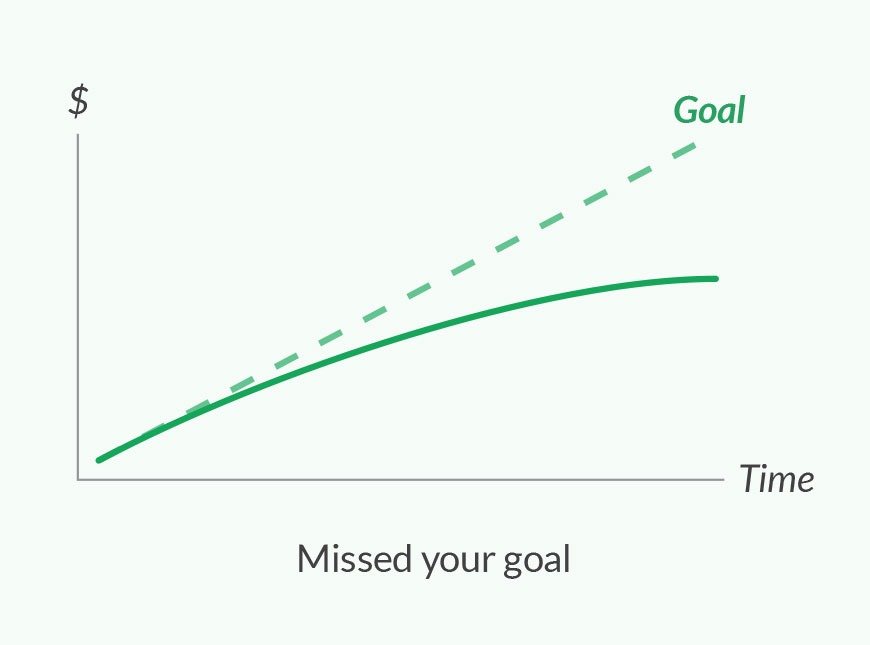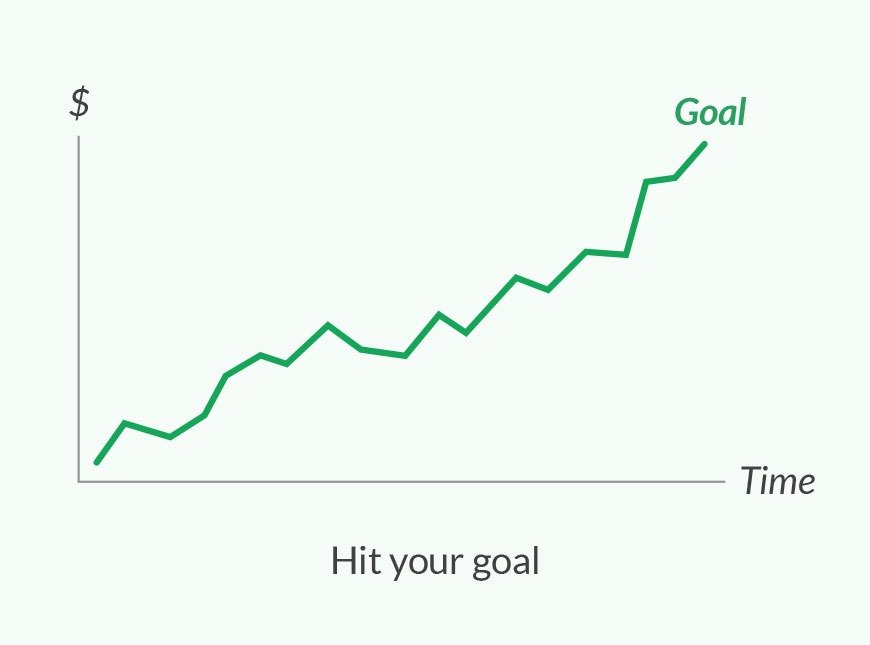How the world’s best financial plans are made
These calculations are based on two types of variables:
- Facts that we know, such as your age and income.
- Estimates that we must make, such as how much the cost of living will rise in the future and what the tax rates will be when you retire.
Until recently, financial planners would take a mix of facts and estimates and build a plan for the rest of your life. The problem with this approach is that the facts will change and at least some of the estimates will turn out to be wrong. The difference with Planswell is that we enable you to quickly update your plan whenever you want. We recommend twice a year. These small but regular adjustments greatly improve the chance of reaching your goals.


This document will give you insight into the facts and estimates that we use to create your financial plan. If you have any questions – or even ideas to make your financial plan better – we would love to hear from you.
The basics
Every plan is unique but there are certain basic assumptions that apply to just about every-one. Here the major ones.
| Variable | Reference / rationale | |
|---|---|---|
| Annual return on investment | Conservative: 3.91% Conservative growth: 4.34% Moderate growth: 4.67% Growth: 5.24% Maximum Growth: 5.63% | Your investor profile determines the rate of return you can expect. More risk generally means more return. We use estimates based on FPSC guidelines and subtracting a 0.50% investment management fee. |
| Annual inflation rate | 1.83% | 25 Year Historical Average for Canada’s CPI |
| Wage growth rate | Equal to inflation (1.83%) | Industry standard |
| Savings rate | Equal to inflation (1.83%) | We expect that you can increase your savings along with your income. |
| Income tax brackets | Indexed to inflation | Government of Canada |
| Living expenses | Indexed to inflation | We expect that your living expenses will increase with the cost of living. |
| Life expectancy | 90 years old | Industry standard |
| Emergency fund | 3 months of income | Industry standard |
| CPP and OAS contribution and benefit amounts | Based on 2017 figures | Government of Canada |
| OAS limit growth | Indexed to inflation | Government of Canada |
| OAS clawback threshold | Indexed to inflation | Government of Canada |
| OAS timing and eligibility | 61.5% of maximum | Conservative estimate |
| Yearly maximum pensionable earnings limit | Based on Canadian aggregate wage growth data | Statistics Canada |
| CPP payment amount | 61.5% of maximum | 2017 Canadian average via Stats Canada |
| CPP payment amount growth | Indexed to inflation | Government of Canada |
| CPP timing | Payments start at retirement (between ages 60 and 70) | Government of Canada |
| Early CPP reduction or late CPP enhancement | Remains constant over time | Government of Canada |
| Payroll deductions | CPP and EI deducted | We assume that you are an employee with standard payroll deductions based on current rates. |
| Home value appreciation | 3% per year | Conservative estimate |
| Home equity | Ability to access up to 50% in retirement | We assume that you can use a line of credit or other means to access your home equity in retirement. |
| Home sale costs | 6% in commissions and other costs | You may have a home that will be sold as part of your estate value calculation. |
Investing for retirement
Your investor profile sets your overall limits for risk and return. Our portfolio manager, Higgins Investment Group Inc. operating as Planswell Portfolios, will ask a series of questions to understand what you expect from your investments and how much risk is appropriate for you to take. This information is used to recommend your ideal investment portfolio. In addition, your plan is designed to minimize your overall tax bill. One of the ways we can do that is by determining the best timing and amount when you invest in a Registered Retirement Savings Plan (RRSP), Tax-Free Savings Plan (TFSA), or taxable (non-registered) account. We make these determinations based on your current tax rate and estimated future tax rate.
| Variable | Reference / rationale | |
|---|---|---|
| RRSP contribution limit | $25,370 or 18% of income, increasing annually | Government of Canada |
| RRSP contribution limit growth rate | Indexed to inflation | Government of Canada |
| RRSP First Time Homebuyer’s Plan allowance | $25,000 | Government of Canada |
| RRSP tax refunds | We assume that these will be reinvested in the plan | Designed to maximize potential investment growth |
| RRSP withholding tax rate | 30% | Government of Canada |
| TFSA contribution limit | $5,500 | Government of Canada |
| RRIF minimum withdrawal | Based on current rates | Government of Canada |
| Order of withdrawal in retirement | RRIF minimum first, then TFSA, then non-registered account | Designed for tax minimization |
| Target retirement income | 70% of current living expenses | Living expenses tend to fall in retirement as you will generally have less debt and fewer dependents. |
| Retirement income amount displayed in plan | Estimated monthly after-tax income expressed in today’s dollars | Monthly after-tax income is the most intuitive way to compare your income today to your income in retirement. |
Investing for a child’s education
Whether you’re investing for school or retirement, the main principles remain the same. However, when saving for a child’s education, our portfolio manager, Higgins Investment Group Inc. operating as Planswell Portfolios, will help you maximize available government grants and automatically apply them to your Registered Education Savings Plan (RESP).
| Variable | Reference / rationale | |
|---|---|---|
| Post-secondary education timing | Age 18 | Industry standard |
| Annual RESP contribution | $2,500 | This amount maximizes the Canada Education Savings Grant (CESG). |
| Maximum Canada Education Savings Grant | 20% of contributions up to $500 per beneficiary annually and $7,200 per beneficiary lifetime | Government of Canada |
| Maximum lifetime RESP contribution | $36,000 | Although the legal limit is $50,000, you get the maximum CESG when you reach $36,000 in total contributions. |
| Canada Learning Bond | Not included in RESP calculation | This benefit is available only to certain lower-income families. |
Protecting your income
The role of insurance is to replace the income that would be lost if you or someone in your family were no longer able to work. The goal is to make sure that, even if there is a negative health event, you and your family will not suffer a lower standard of living now or in retirement. If you are over age 60, we will not automatically recommend insurance as part of your plan, but will discuss your needs with you on an individual basis.
Your plan may include three types of insurance:
Term Life Insurance pays a tax-free lump sum if the insured person passes away. We design your plan with the expectation that this amount will be invested according to the risk tolerance of the surviving spouse in order to produce ongoing income.
Critical Illness Insurance pays a tax-free lump sum if you are diagnosed with one of several common illnesses including cancer and heart disease. This amount is designed to cover lost income as well as a variety of medical expenses that are not covered by public health plans.
Disability Insurance pays a monthly tax-free benefit if you become temporarily or permanently disabled and cannot work at your current occupation. Studies show that an accident or illness will cause about one person in three to be disabled for 90 days or more in their lifetime.
| Variable | Reference / rationale | |
|---|---|---|
| Life insurance income replacement | 100% of after tax income + all outstanding liabilities | We recommend enough coverage to maintain a certain percentage of your current household income up until the retirement of the surviving spouse. We expect that the survivor will continue to work and earn the same income they do today. |
| Life insurance debt coverage | Coverage amount designed to pay off all outstanding debts | Industry standard |
| Critical illness insurance | 100% of annual after-tax Income | Industry standard |
| Disability insurance | 65% of pre-tax income replacement until age 65 | Industry standard |
Managing your debt
At Planswell, our goal is to prevent you from paying unnecessary interest costs. That’s why we’ll recommend ways to minimize your debt costs while you invest, or even before you can start investing.
Here are the three main debt solutions that may be included in your plan:
Refinance your debt. If you have credit cards, loans, lines of credit, or other debts and also have home equity of 20% or more, we may advise you to pay off your debts with a new home mortgage in order to free up free up cash flow for investing and insurance.
Pay down your debt and invest at the same time. If you have debt with an interest rate lower than your expected investment returns, we may advise you to work on paying it off while also adding to your investments.
Pay down your debt before investing. If you have high-interest debts that cannot be refinanced, we will advise you to work on paying them off, starting with the highest interest rate first. Once this is done, we’ll get your investments started.
| Variable | Reference / rationale | |
|---|---|---|
| Credit card interest rate | 19.99% per year compounded monthly | Financial Planning Standards Council Guidelines |
| Car loan interest rate | 5% per year compounded monthly | Financial Planning Standards Council Guidelines |
| Line of credit interest rate | 5% per year compounded monthly | 5% per year compounded monthly |
| Other debt interest rate | 5% per year compounded monthly | 5% per year compounded monthly |
| Mortgage interest rate | 3% per year compounded semi-annually | Industry Standard |
| Maximum debt to service ratio | 44% | Industry Standard |
| Maximum home loan to value (LTV) | 80% | Industry Standard |
| Amortization period | Up to 30 years | Industry Standard |
| Fee to break existing mortgage | Three months’ interest for variable rate mortgages | Industry Standard |
Reaching your goals
The world’s best financial plan is the one that actually gets you to your goals. That’s why we’ll ask you to log in to your Planswell dashboard every six months and spend a few minutes updating your plan. This will help make sure that your plan reflects the most up-to-date facts and estimates ,and that you have the best possible picture of where you’re heading financially.
| Variable | Reference / rationale | |
|---|---|---|
| Plan update interval | Every six months | This is the key to reaching your goals! |
If you have any questions or would like to suggest ways to improve your plan, please let us know. [email protected]